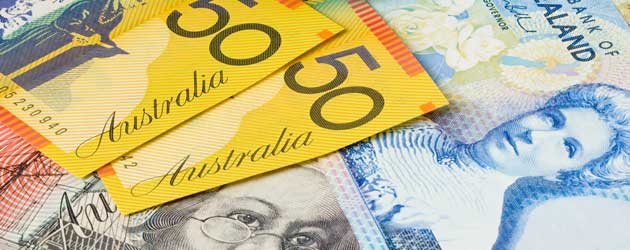
The Pound advanced by around 0.8 cents against the Australian Dollar and rallied by over a cent against the New Zealand Dollar yesterday as a steep decline in the Japanese stock market led to a bout of risk aversion, which hurt demand for the Antipodean currencies.
GBP/AUD rose from just under 1.6600 yesterday to reach 1.6690 during the afternoon as a stronger-than-expected US housing market indicator set-off a cascade of Australian Dollar sell orders. GBP/NZD jumped higher from 1.9020 to 1.9120 when it was announced that US Pending Home Sales improved by 9.1% during June, compared to forecasts of just 8.3%. The robust US figure was interpreted as dovish for the ‘Aussie’ and the ‘Kiwi’ because it was seen to improve the possibility that the Federal Reserve will look to slowdown its expansive $85 billion a month quantitative easing scheme.
The US Dollar did not garner much support against the Pound in relation to the optimistic Pending Home Sales figure because previous US housing releases have come in all over the place, clouding investors’ perspectives of the US housing market. However, even the slightest hint that the Fed’s liquidity-boosting QE3 scheme could be coming to a premature end was enough to derail the risk-sensitive Antipodean currencies yesterday.
Risk sentiment was damaged when markets opened for the new week of trading as Bank of Japan Governor Haruhiko Kuroda said that he intends to introduce a 10% sales tax, double the current 5% rate of taxation. The austere move contradicts the Japanese government’s ambition to kick-start an economic revival in the Land of the Rising Sun, but many feel that it is vital to improve the country’s public finances. If taxes are doubled it is likely that economic output will cool-off slightly in Japan and this bodes badly for Australia and New Zealand, due to their close trade ties with world’s third largest economy.
Investors’ appetite for risk tumbled even further yesterday as the Japanese Nikkei stock index closed for the day -3.32% down. The heavy 468.85 share losses were influenced by poor earnings figures from car exporters Honda and Toyota as the relatively strong Japanese Yen continues to hurt Japanese exports.
Later on this week important monetary policy announcements from the Bank of England and the Federal Reserve should dictate the direction of the Pound to Australian Dollar exchange rate (GBP/AUD) and the Sterling to New Zealand Dollar exchange rate (GBP/NZD) during the month of August. If the Federal Reserve hints that it is on the verge of reducing asset purchases then the subsequent liquidity freeze-up is likely to reduce demand substantially for the high-risk ‘Aussie’ and ‘Kiwi’ currencies.
However, Sterling could find itself under pressure if the BoE decide to defy analysts’ expectations and embark on a further round of quantitative easing. There is a stronger likelihood that the UK Central Bank will hold off on asset purchases for the time being, but with talk of the current economic revival being “weak by historical standards” from Governor Mark Carney there is always the possibility that the MPC will vote to ease monetary policy further in order to help the British economy reach exit velocity.

Comments are closed.